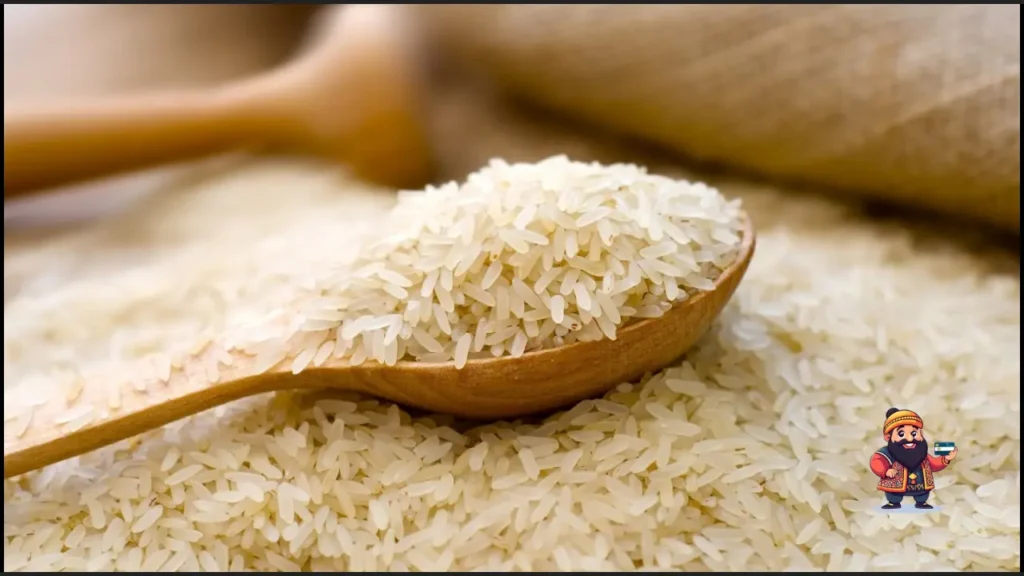Current Rice Rates in Pakistan (2025) – Updated Price Trends
In 2025, rice prices across Pakistan have seen a noticeable rise, with current rates per kilogram ranging from Rs. 310 to Rs. 420. For those purchasing in bulk, such as wholesalers or retailers, a 50-kg rice bag is now priced between Rs. 15,050 and Rs. 16,400, with costs varying depending on the rice type and the specific regional market.
Rice remains one of the most essential and widely consumed food staples in Pakistan. It not only plays a central role in the daily diet of millions but is also a critical pillar of the agricultural sector. A large portion of the population earns its livelihood through rice cultivation, processing, and exports.

Latest Rice Prices in Pakistan – 2025 Overview
Prices of rice in Pakistan differ based on various factors such as grain type, quality, packaging, and regional demand. Here’s an updated overview of the latest price ranges this year:
Rice Rates in Pakistan
| Quantity | Minimum Price | Maximum Price |
|---|---|---|
| 1 KG | Rs. 310 | Rs. 420 |
| 25 KG | Rs. 7,700 | Rs. 8,040 |
| 50 KG | Rs. 15,050 | Rs. 16,400 |
| 1 Ton | Rs. 344,000 | Rs. 439,000 |
Why Are Rice Prices Fluctuating in Pakistan?
Several economic, environmental, and political variables contribute to the volatility in rice prices across Pakistan. The most prominent influencing factors include:
- Supply vs. Demand Imbalances: When the production levels don’t meet market consumption rates, prices tend to spike due to scarcity.
- Government Interventions & Agricultural Policies: State regulations like export duties, import tariffs, or farmer subsidies can impact price structures across regions.
- Global Market Influence: Being a key exporter to countries in the Middle East and other regions, Pakistan’s rice prices are also affected by international market trends and global demand.
Detailed Price List for Different Rice Types (40 KG Bags)
Here’s a breakdown of 40-kg rice prices categorized by type and processing method (White, Sella, and Steam):
Price List for Different Rice Types
| Rice Variety | White | Sella | Steam |
|---|---|---|---|
| Kainat 1121 B1 Broken | Rs. 2,560 | Rs. 2,700 | Rs. 3,150 |
| New Super Basmati | Rs. 4,500 | Rs. 4,660 | Rs. 5,300 |
| 386 Basmati | Rs. 2,900 | Rs. 3,400 | Rs. 3,590 |
| Super Fine | Rs. 3,200 | Rs. 3,580 | Rs. 4,000 |
| Kainat 1121 B2 Broken | Rs. 2,150 | Rs. 2,360 | Rs. 2,600 |
| Kainat 1121 Short Grain | Rs. 3,300 | Rs. 3,390 | Rs. 3,500 |
| Super B2 Broken | Rs. 2,350 | Rs. 2,450 | Rs. 2,700 |
| Irri 6 | Rs. 2,300 | Rs. 2,500 | Rs. 2,750 |
| C9 | Rs. 2,700 | Rs. 2,840 | Rs. 3,150 |
| Supri | Rs. 2,670 | Rs. 2,890 | Rs. 3,000 |
| Super Basmati (Old) | Rs. 4,600 | Rs. 5,200 | Rs. 5,500 |
| 1509 | Rs. 4,280 | Rs. 4,590 | Rs. 5,000 |
| Kainat 1121 | Rs. 5,100 | Rs. 6,100 | Rs. 6,250 |
| Super Kainat | Rs. 4,100 | Rs. 4,250 | Rs. 4,500 |
| Super Short Grain | Rs. 3,050 | Rs. 3,200 | Rs. 3,400 |
Also Read: 1 Pound Cake Price in Pakistan
Final Thoughts
Rice rates in Pakistan continue to fluctuate due to an interplay of both domestic challenges and international trends. With rice being an integral part of both the national diet and the agricultural economy, such price shifts deeply impact consumers, retailers, and especially the farmers.
To maintain price stability and enhance productivity, it’s essential for the government to develop comprehensive agricultural strategies and ensure that farming communities receive sufficient support. Strengthening this sector will not only stabilize prices locally but also reinforce Pakistan’s standing as a major global rice exporter.
Frequently Asked Questions (FAQs)
Why are rice prices different in various regions of Pakistan?
Rice prices vary across regions due to differences in transportation costs, local supply and demand, quality of produce, and the proximity to rice mills or cultivation areas. Urban areas may also have higher rates due to increased logistics and storage expenses.
What is the most expensive type of rice available in Pakistan in 2024?
In 2024, the Kainat 1121 (Steam) variety is among the most expensive, with prices reaching up to Rs. 6,250 for a 40-kg bag. This is due to its premium quality, long grain size, aromatic flavor, and high export demand.
How do international markets affect rice prices in Pakistan?
Pakistan exports a significant portion of its rice to global markets. If international demand rises or global prices increase, local prices tend to follow suit. Likewise, currency fluctuations and trade policies can also impact export competitiveness and domestic pricing.
Is rice more expensive during certain seasons?
Yes, rice prices often fluctuate seasonally. During harvesting months, prices may drop due to increased supply. However, in off-seasons or when storage levels are low, prices typically climb due to reduced availability.
Can consumers save money by purchasing rice in bulk?
Absolutely. Buying rice in bulk quantities such as 25 kg or 50 kg sacks is generally more cost-effective per kilogram compared to smaller retail packets. This is especially beneficial for large families, restaurants, or retailers looking to reduce their food expenses.



